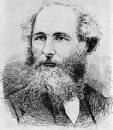| |

Home
Contact Info
Course Info
Calendar
Homework
Lecture Notes
|
|
|
|
PHY 218: Electricity and Magnetism II
Prof. S. Teitel stte@pas.rochester.edu ---- Spring 2019
Problem Set 1
Due Friday, February 1, by 4 pm in the homework locker
- Problem 1 [15 points]
In lecture, when we derived the following expression for the energy stored in a configuration of magnetostatic currents,
Wmag = (1/2)∫ d3r j(r)⋅A(r)
we assumed that the vector potential A was in the Coulomb gauge, i.e. that ∇⋅A = 0.
Show that in fact this expression is correct even when A is not in the Coulomb gauge.
Hint: Suppose A is in the Coulomb gauge. Construct another vector potential by taking A'(r) ≡ A(r) + ∇χ(r), where χ(r) is any scalar function. Note, this A'(r) is a good vector potential, i.e. it gives the same B = ∇×A' as does A, however A' does not in general satisfy ∇⋅A' = 0. Show that Wmag = ∫ d3r j(r)⋅A'(r) still gives the correct energy stored in the configuration.
- Problem 2 [15 points]
An infinite cylinder of radius R carries a uniform surface charge desnity σ. Suppose the cylinder is spun up about its axis starting from rest to a final angular velocity ωf. How much work does this take, per unit length? Do the calculations two ways, as outlined below, and compare your answers. You should find that they are equal!
a) Find the magnetic field B and the induced electric field E (in the quasistatic approximation where one can compute B as in magnetostatics). Using these results you should see that the induced E creates a torque N on the cylinder about its axis. Compute the net torque N, per unit length, on the cylinder, and then compute the work associated with rotating the cylinder against this torque, W = ∫ Nmech dφ, where Nmech is the magnitude of the torque that must be applied to counter the torque from the induced E.
b) Compute the total energy stored in the magnetic field B in the final configuration.

|
|